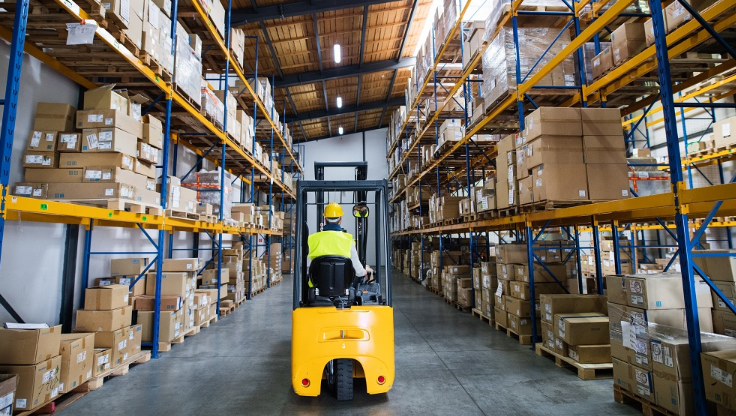Key Takeaways:
- Discover the latest trends and technologies in warehouse storage solutions.
- Learn how to optimize your warehouse layout for maximum efficiency.
- Understand the benefits of automated storage and retrieval systems (AS/RS).
- Find out how data analytics can improve warehouse management.
- Explore sustainable practices for better inventory management.
Table of Contents:
- Introduction to Warehouse Storage Solutions
- Optimizing Warehouse Layout for Maximum Efficiency
- The Role of Automated Storage and Retrieval Systems
- Harnessing Data Analytics for Improved Warehouse Management
- Sustainable Practices in Inventory Management
Introduction to Warehouse Storage Solutions
Innovative warehouse storage facility solutions are vital for staying competitive in today’s logistics industry. Companies continuously seek new ways to enhance their storage capabilities and streamline operations. Adequate warehouse storage is more than shelving units; it’s about optimizing every element to ensure efficiency and cost savings. From implementing innovative technology to designing effective layouts, modern warehouse management requires a multi-faceted approach.
Optimizing Warehouse Layout for Maximum Efficiency
One of the first steps in improving warehouse efficiency is optimizing the layout. This involves strategically placing shelving units, designing pathways for minimal obstruction, and ensuring easy access to high-turnover items. The idea is to create a seamless flow that reduces unnecessary movement and time wastage. An optimized layout not only increases productivity but also enhances safety by reducing the risk of accidents and injuries in the workplace.
Design Principles for a Functional Layout
- Flow: Ensure minimal obstructions to create a natural flow of items and workforce. Clear, wide aisles and logical placement of items can significantly reduce time spent in transit within the warehouse.
- Accessibility: Position high-turnover items in easily accessible areas. Use techniques such as ABC analysis to categorize items based on their demand and place them accordingly.
- Scalability: Design with future expansion in mind to accommodate growth. A scalable layout can quickly adapt to changes in inventory levels, product lines, or business needs without requiring a complete overhaul.
The Role of Automated Storage and Retrieval Systems
Automated Storage and Retrieval Systems (AS/RS) are revolutionizing the way warehouses function. These systems use robotics to retrieve and store items, drastically reducing the time and labor required. According to market analysis, AS/RS can significantly boost productivity and accuracy. By automating repetitive and time-consuming tasks, warehouses can operate more efficiently and with higher precision, reducing human error and increasing throughput.
Benefits of AS/RS
- Efficiency: Automation reduces manual labor and minimizes errors. It allows continuous operation with minimal supervision, leading to higher efficiency rates.
- Speed: Enhances the speed of storage and retrieval operations. Robots and automated systems can operate at high speeds and with consistent accuracy, outperforming manual methods.
- Space Utilization: Optimizes vertical space, maximizing the warehouse footprint. AS/RS can utilize high ceilings and tight spaces more effectively than traditional storage methods.
Harnessing Data Analytics for Improved Warehouse Management
Data analytics plays a pivotal role in modern warehouse management. By analyzing patterns and trends in inventory data, companies can make informed decisions to optimize stock levels, streamline operations, and reduce costs. As reported, digital transformation in warehouse management is driving substantial operational efficiencies. Data-driven insights allow for proactive management and strategic planning, which can lead to significant performance improvements.
Applications of Data Analytics
- Inventory Optimization: Adjust stock levels based on demand patterns. Predictive analytics can forecast future demand, helping to maintain optimal inventory levels without overstocking or understocking.
- Process Improvement: Identify bottlenecks and inefficiencies in workflows. Data analytics can highlight areas where processes can be streamlined, or resources can be better allocated.
- Predictive Maintenance: Utilize data to anticipate equipment maintenance needs. Regularly monitored equipment performance data can indicate when maintenance is necessary, preventing unexpected breakdowns and reducing downtime.
Sustainable Practices in Inventory Management
Sustainability is a growing concern in the logistics industry. Implementing sustainable practices in inventory management, such as reducing waste, optimizing energy use, and adopting eco-friendly packaging, benefits the environment and enhances the company’s image and operational efficiency. Sustainable practices can also lead to cost savings and operational efficiencies, making them beneficial from a business and environmental perspective.
Key Sustainable Practices
- Waste Reduction: Minimize excess inventory and use recyclable materials. Implementing a just-in-time (JIT) inventory system can help reduce waste by aligning supply more closely with demand.
- Energy Optimization: Implement energy-efficient systems and processes. Using energy-efficient lighting, HVAC systems, and renewable energy sources can significantly reduce a warehouse’s energy footprint.
- Eco-Friendly Packaging: Use sustainable materials for packaging and shipping. Opt for biodegradable or recyclable packaging materials and design packaging that uses less material overall.

